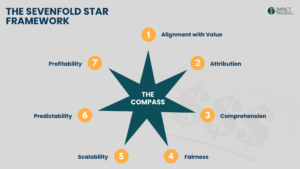Should DAZN raise it’s prices from $19.99 to $50.00 per month?
If you’re like me, you probably don’t know who DAZN is. DAZN is a video streaming service for live sports that specializes in boxing. While a sports related business falls outside my usual topics, this post and the following information will apply to ALL subscription companies, B2B, B2C, IOT, you name it.
First, let’s recognize that:
Regular small price increases in subscriptions are almost always well received.
You’ve been working hard to add more capabilities to your offer, to keep your subscribers happy. At the same time, your subscribers are learning more about all of the capabilities you have and they are arranging their lives or their jobs around your product. Your product now fits them better than when they first subscribed. Of course you can probably get away with a 10-20% price increase. The big exception to this is if significant competition has entered your market. I’d guess that Netflix is going to have a hard time raising prices now with all of the new streaming services coming on line.
However, a 150% price increase feels like betting the company.
Remember the huge price increase Netflix had several years ago? They lost 800,000 subscribers and 75% of their stock price in 3 months. Maybe DAZN can get away with it here. After all, they raised their prices from $9.99 to $19.99 a year ago and it didn’t seem to slow their growth. But why risk it?
Here is my advice: Test it.
Testing Price Increases in Your Subscription Business Decreases Risk
Here are two fantastic ways to test price increases on your market.
1. Only raise prices on new subscribers.
If the acquisition rate doesn’t slow dramatically, that says the $50 price tag is a great value. This is a good indicator that the early adopters probably wouldn’t churn if their prices were increased as well.
2. Phase in price increases based on usage.
Usage is probably highly correlated with value. The more someone uses your product, the more value they receive from it.
Here are a few steps to test the usage/value of your consumers:
- Put your subscribers in rank order based on usage.
- Try the price increase first on the top 10%. They should be least likely to churn.
- Monitor the results. If they are acceptable, raise the rates on the next 10-20% of users.
- Keep working your way down the list of users. There will be a point where the churn is too high.
If usage is correlated with value, then people with low usage value your product less and are less likely to accept a price increase. (After all, you probably have subscribers who never use your product. Raising the price on them is just a reminder they needed to cancel.)
Once you reach the place where the cost of churn is higher than the profit increase due to higher prices, don’t raise prices on users below that usage level.
One of the great things about many subscription businesses is that you know the usage of your subscribers. Take advantage of that information and test price increases carefully.
Back to DAZN, I have no idea if they should raise their price. However, if they believe this price increase is justifiable, here are two ways to test it. These two techniques will work for those smaller, more regular price increases too.















